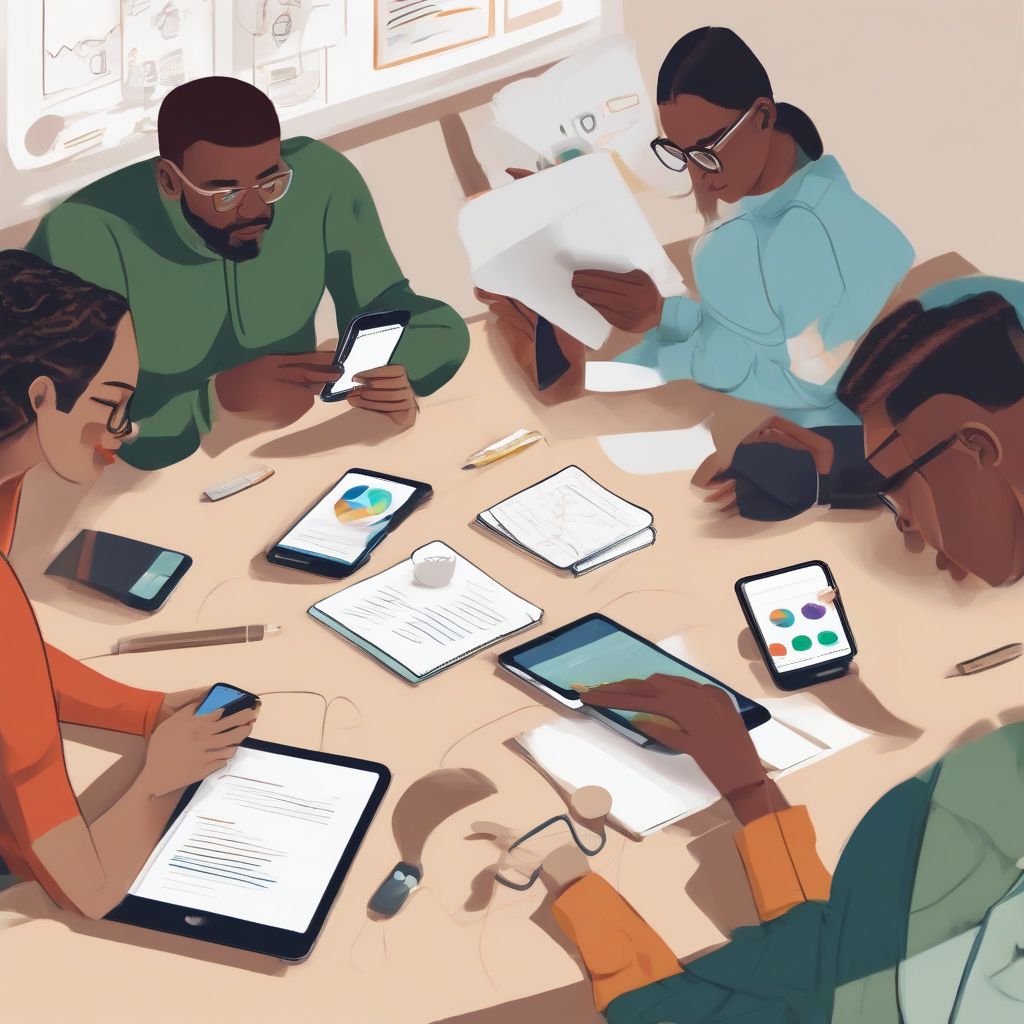Imagine this: you’ve poured your heart and soul into designing an amazing mobile app. You’re confident it’s user-friendly and intuitive. But then, it launches, and… crickets. Users aren’t engaging with it the way you expected. What went wrong?
Often, the missing ingredient is user testing. Without understanding how real users interact with your app, you’re essentially shooting in the dark.
This comprehensive guide will walk you through the what, why, and how of user testing for mobile app design, empowering you to create an app that not only looks good but also delivers an exceptional user experience.
Why User Testing is Non-Negotiable for Mobile App Success
Before we dive into the “how,” let’s answer the “why.” In a nutshell, user testing helps you:
- Identify usability problems early on: It’s far easier (and cheaper) to fix issues during the design phase than after launch.
- Validate design decisions: Don’t rely on assumptions. User testing provides real-world data to back up (or refute) your design choices.
- Improve user satisfaction and engagement: A user-friendly app leads to higher retention rates, positive reviews, and ultimately, greater success.
- Reduce development costs: Finding and fixing issues early can save you significant time and money in the long run.
- Gain valuable user insights: Directly observe how users interact with your app, uncover their pain points, and gather feedback to enhance the overall experience.
Types of User Testing for Mobile Apps
Not all user tests are created equal. Here are some of the most common types:
1. Moderated vs. Unmoderated Testing
- Moderated testing: Conducted in real-time with a facilitator guiding participants through tasks and asking follow-up questions. This method allows for in-depth insights but can be more expensive and time-consuming.
- Unmoderated testing: Participants complete tasks independently, without a facilitator present. This approach is more affordable and scalable, but you miss out on real-time observations and interactions.
2. Remote vs. In-Person Testing
- Remote testing: Participants complete the test using their own devices, from their own location. This offers flexibility and a wider geographical reach.
- In-person testing: Conducted in a controlled environment, such as a usability lab. This allows for close observation and the use of specialized equipment, but can be more expensive and logistically challenging.
3. Qualitative vs. Quantitative Testing
- Qualitative testing: Focuses on gathering in-depth feedback about users’ experiences, opinions, and motivations. Think open-ended questions, think-aloud protocols, and user interviews.
- Quantitative testing: Aims to collect measurable data, such as task completion rates, time on task, and error rates. This type of testing is ideal for tracking progress and benchmarking usability over time.
The 5-Step Guide to Conducting User Testing Like a Pro
Now that you understand the “why” and the “what,” let’s explore the “how.” Follow these steps to conduct effective user testing for your mobile app:
1. Define Your Objectives and Target Audience
- What do you want to learn from this test? Clearly outline your goals and objectives.
- Who is your target audience? Recruit participants who represent your ideal users in terms of demographics, tech-savviness, and familiarity with similar apps.
2. Create a Realistic Test Plan
- Develop a test script: Outline the tasks you want participants to complete, ensuring they align with your objectives.
- Choose the right testing method: Consider your budget, timeline, and the type of data you need to collect.
- Select your testing tools: There are numerous tools available to streamline user testing, from recording software to remote testing platforms.
3. Recruit Your Participants
- Use your existing network: Reach out to your social media followers, email subscribers, or existing customer base.
- Offer incentives: Compensation, such as gift cards or discounts, can encourage participation.
- Leverage online platforms: Specialized recruitment services can help you find participants who fit your target audience criteria.
4. Conduct the Test and Gather Data
- Provide clear instructions: Make sure participants understand the tasks and how to provide feedback.
- Observe and take notes: Pay attention to users’ body language, facial expressions, and any verbal comments they make.
- Record the sessions: This allows you to revisit the tests later and catch any details you might have missed.
 User Testing Session
User Testing Session
5. Analyze the Results and Iterate on Your Design
- Identify patterns and trends: Look for common pain points, areas of confusion, or positive feedback.
- Prioritize usability issues: Focus on addressing the most critical issues first, based on their impact on the user experience.
- Iterate on your design: Use the insights gathered to make informed design decisions and improve your app’s usability.
Best Practices for Effective User Testing
- Keep it simple and focused: Don’t overwhelm participants with too many tasks or complex instructions.
- Encourage think-aloud protocols: Ask participants to verbalize their thoughts and feelings as they interact with the app.
- Don’t lead the witness: Avoid asking leading questions that might bias participants’ responses.
- Test early and often: Integrate user testing throughout the entire design and development process.
- Be open to feedback: Embrace both positive and negative feedback as valuable opportunities for improvement.
Conclusion: Make User Testing an Integral Part of Your App Development Process
In the competitive world of mobile apps, a seamless user experience is paramount. User testing is not just a “nice to have” — it’s a critical investment in the success of your app.
By incorporating user feedback early and often, you can create an app that is not only visually appealing but also intuitive, engaging, and truly resonates with your target audience.
Ready to take your mobile app to the next level? Start by implementing a robust user testing strategy today!
[amazon bestseller=”mobile app design”]
